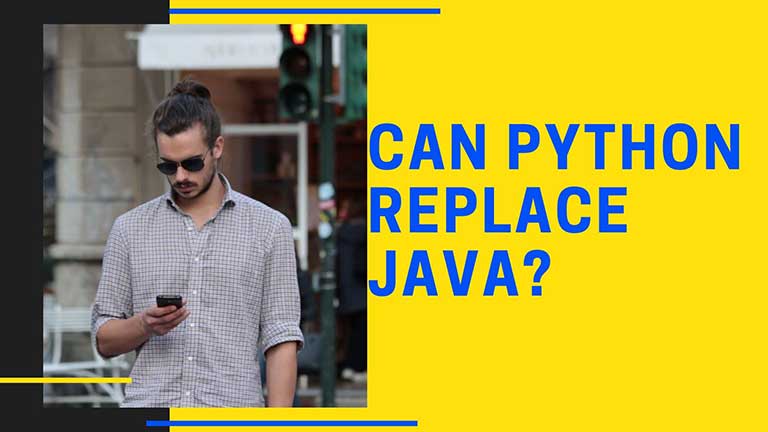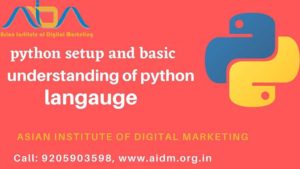Post Contents
Yes! Python can replace Java technology but that doesn’t mean that java will be vanished completely from the industry. But there is a huge possibility that python can become the number 1 choice for programmers and developers.
According to the IT industry trend, Java has been the most popular language than another programming language in terms of job vacancies. According to the survey report that was conducted a few months before that Java language is being used by 3.0% website as a server-side programming language and in case of python language, it is being used by only 0.2% of websites.
But all the reports have shown that python is growing with lightning speed as compared to the other language and the use of Java has been decreasing in recent years.
Content for table
| Programming Language | 2015 April | 2015 April | 2016 April | 2017 April | 2018 April | 2019 April |
|---|---|---|---|---|---|---|
| Java Job Posting for Bangalore City | 17000 | 17000 | 15000 | 12000 | 9500 | 7000 |
| Python Job Posting for Bangalore City | 200 | 500 | 3500 | 6500 | 11500 | 15800 |

After analysing the trend of past years, we have found that the trend off Python in continuously increasing, simultaneously the data shows that the demand for Java candidates has decreased. But it is too early to predict anything about the programming languages because Java has been using by major IT companies and lots of Giant websites have used it.

But according to the IT industry trends, the popularity of python is more than in the current scenario.
So it becomes very essential to understand the difference between the two most popular language.
Difference between Java and Python
Java and Python, both are general-purpose programming languages and both are very popular in the IT industry.
Java developers need to write long code to achieve common programming task and they have to put extra time & effort to organize, update and maintain the code.
While on the other hand, Python allows the developers to accomplish a similar task without writing long code as java requires. Its codes can be further emphasized on reusable and readable code generation.
So the python codes are easy to maintain and update from its codebase.
It will be good if you learn Data Science course in delhi yourself by joining the Django training in delhi
Difference between versions of Java & Python
The authorities of both the language have been provided regular updates to cater the users with the best experience. The programmers of java can use Java 8 to explore new features in including lambda expression, a new functional interface and a new date/time API.
If the java users want to switch from Java 7 to Java 8, they can easily perform this task without any hassle.
While in case of python, developers often find it hard to switch from python 2.x to python 3.x because both the versions are maintaining parallel, hence switching from version 2 to version 3 is a little bit challenging.
Become an expert in the most popular programming language “Python” by joining the python training institute in Delhi
Cross-platform compatibility
Java makes it simpler for software engineers to make convenient cross-platform applications. These applications can run on any gadget on which Java virtual machine (JVM) is running.
Then again, the engineers need to utilize a Python compiler to change over the code written in Python into code justifiable by the particular working framework.
As JVM is introduced on numerous devices, the designers can run Java applications on different devices without requiring any specific tools and compilers.
Performance and Speed
The speed and performance of both the programming languages may differ as per its use. There are a lot of users who says that Java faster than python.
As it can not be utilised for achieving CPU-intensive tasks but there are various options which a developer can choose to boost the speed while using python like they can replace python’s default runtime with Cython, CPython, PyPy to execute the task speedily.
On the other hand speed of java applications can be easily optimized without using any additional tool.
Get the opportunity to make your career as a python developer. You can join the best python training institute in Laxmi Nagar Delhi.
Which one is best for App development
Java is widely used and popular for developing mobile applications. We all know that worlds most popular operating system “ANDROID” is based on java technology.
It has a huge number of standard libraries and framework which can be used to make applications for giant companies.
But the developers who are into python can not use it for mobile application development directly. They need to use some other frameworks and tools to develop a mobile application.
But with the use of Java technology, they can save their time and efforts.
So you can also learn Java technology if you love to create an application for mobile by joining into the best Java training institute in Delhi
Reason for Python Popularity
Reason for becoming the python language gaining popularity is its simplicity. That means writing a code in python language is similar to writing in the English language.
Also, it has a huge community across the world, the developers can rectify any issue by asking queries in those groups where a lot of experts are available to answer your queries.
These are the reasons for the popularity of the python language. It has become the choice of present trending technology demand. Like Web development, infrastructure automation, mobile testing, software testing, big data an Hadoop, cloud computing (OpenStack, Google Cloud, Oracle Cloud etc)
According to the experts, if the current trend continue then python language will become the most popular and widely used programming language in the IT industry within the next 3 to 5 years. If you want to make career in this technology, so enrol yourself in the best Python course in Laxmi Nagar Delhi.
Recommended Blog For You:

- Whats skills make you a Good Data Scientist?
- Why is learning python for Data Science important?
- How Data Science Is Helping To Change The World?
- Importance of joining a data science institute
- 5 tools of Google Analytics that can be used as a Data Scientist
- COVID 19 Lockdown- its the right time to join a Data Science course







